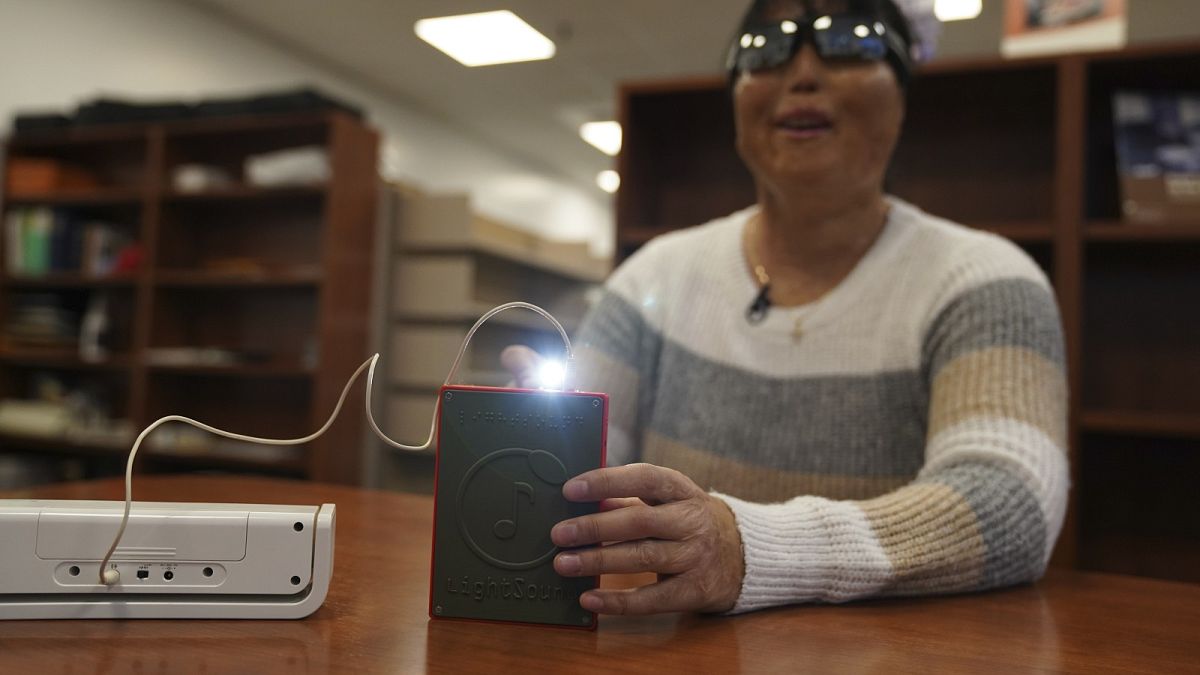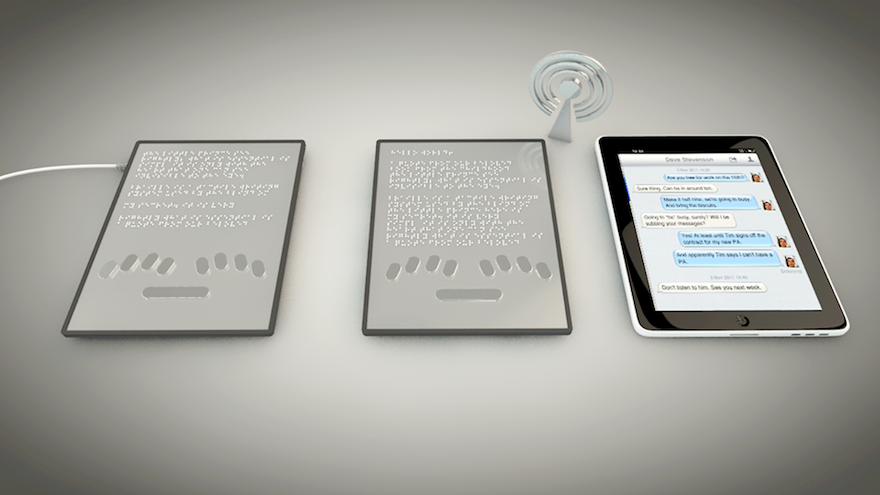AI-Powered Visual Aids: Redefining Support for the Blind
Wiki Article
Discover Innovative Tools Designed for the Visually Impaired
The development of cutting-edge tools for the visually impaired stands for a substantial advancement in ease of access and independence. Technologies such as clever glasses with AI abilities and mobile applications developed to supply auditory descriptions are reshaping daily experiences for users.Smart Glasses for Navigation

Smart glasses designed for navigating are transforming the means aesthetically impaired people communicate with their environment. These innovative devices make use of a combination of video camera innovation, man-made knowledge, and auditory responses to supply real-time information regarding surroundings. By employing barrier discovery systems, clever glasses can inform individuals to prospective hazards, enabling safer movement in both unknown and acquainted settings.
The assimilation of GPS modern technology even more boosts navigation capabilities, allowing users to get auditory directions as they relocate. This hands-free technique not only promotes freedom but additionally empowers aesthetically damaged individuals to navigate city landscapes with increased confidence. In addition, numerous clever glasses are geared up with functions that determine landmarks and road indicators, offering contextual details that enhances the user experience.
Moreover, the advancement of these tools is constantly progressing, with firms working to enhance the accuracy of item acknowledgment and broaden the range of navigational attributes. As smart glasses end up being extra budget-friendly and available, they hold the potential to significantly change day-to-day live for aesthetically damaged individuals. Ultimately, these innovative devices stand for an important step toward inclusivity, offering boosted movement and a higher sense of autonomy for individuals navigating the world around them.

Mobile Apps for Daily Living
Just how can mobile applications boost the lives of aesthetically impaired individuals? Mobile applications are reinventing the method visually damaged customers browse their atmospheres, manage day-to-day tasks, and access details. These applications give crucial assistance with different functionalities, promoting self-reliance and enhancing lifestyle.A number of ingenious mobile apps are designed especially for day-to-day living. As an example, applications like Be My Eyes attach aesthetically impaired customers with sighted volunteers through video clip phone calls, permitting them to get real-time support with tasks such as reading tags or navigating unfamiliar spaces. Seeing AI, established by Microsoft, uses fabricated intelligence to define environments, read text, and determine objects, properly changing a smartphone right into a powerful device for everyday support.
Additionally, navigation applications customized for the aesthetically impaired, such as Aira and BlindSquare, offer audio-based instructions and ecological information, allowing customers to traverse their surroundings securely and confidently. Past navigating and immediate help, mobile applications likewise sustain company and job monitoring, with attributes that help individuals set tips, develop to-do lists, and track visits. In recap, mobile applications function as essential resources, equipping aesthetically damaged people to lead more independent and fulfilling lives.
Wearable Technologies for Assistance
Empowerment through innovation is progressively noticeable in the world of wearable devices designed to assist aesthetically damaged people. These cutting-edge devices incorporate seamlessly into every day life, enhancing navigation and supplying vital responses rimless prescription glasses to customers. As an example, clever glasses outfitted with cameras can read and acknowledge faces text out loud, permitting individuals to engage even more confidently in specialist and social setups.An additional significant improvement is using haptic feedback systems in wearable tools. These systems utilize resonances or other tactile signals to communicate information concerning the individual's atmosphere, such as barriers or adjustments in terrain, boosting flexibility and safety and security. Wearable technologies additionally consist of wristbands that connect to mobile phones, notifying individuals to notices with subtle resonances, therefore boosting connection without dependence on aesthetic cues.
As these modern technologies remain to advance, they are not just boosting freedom for aesthetically damaged individuals but likewise cultivating a better sense of inclusion in culture. By bridging the space in between difficulties encountered in everyday living and the possibility for autonomy, wearable technologies work as pivotal tools in the pursuit for equality and empowerment for those with aesthetic problems.
Sound Description Tools
Sound summary tools play a crucial function in enhancing availability for visually impaired individuals, giving them with the ability to involve with aesthetic media. Smart glasses for the visually impaired. These devices provide narrated summaries of vital visual aspects in movies, tv programs, and live performances, ensuring that customers can completely understand the context and feelings conveyed with visualsSound description can be incorporated right into numerous platforms, including streaming services, cinema screenings, and live movie theater. Several popular streaming solutions currently include audio summary as an availability feature, allowing viewers to choose it quickly. Along with conventional media, specialized applications likewise exist, supplying audio summaries for art exhibits, galleries, and various other cultural events.
The efficiency of audio description depends upon the ability of the narrators, who should communicate visual details succinctly without taking away from the original audio. Technologies in this area are also paving the way for more customized experiences, where individuals can change the level of detail and pacing according to their preferences.
Braille Innovations and Devices
Braille technologies and gadgets have dramatically transformed the method aesthetically impaired people communicate with message and information. Modern developments have actually led to the advancement of functional tools that improve proficiency and freedom among individuals. Especially, Braille display innovations have actually click to investigate evolved, permitting vibrant analysis experiences. These tools convert digital message right into Braille, making it possible for users to access a huge selection of information on tablet computers, computer systems, and smart devices.
In addition, mobile Braille notetakers incorporate typical Braille input with modern-day capabilities, promoting Look At This note-taking, organizing, and paper modifying on the go. Wearable technology for low vision. These compact devices usually include text-to-speech abilities, bridging the void in between Braille and auditory information
Additionally, ingenious Braille printers have arised, enabling individuals to produce Braille tags, papers, and academic products successfully. This accessibility fosters greater participation in educational and professional settings, eventually promoting inclusivity.
In addition, research study into clever Braille innovations remains to increase. Gadgets that incorporate fabricated intelligence are being explored to supply real-time navigation aid and contextual info, boosting the individual experience in diverse settings. Overall, these innovations show a commitment to encouraging aesthetically damaged people with modern technology, ensuring they can conveniently gain access to and involve with the world around them.

Verdict
The improvement of innovative devices for the aesthetically impaired dramatically enhances freedom and high quality of life. These technologies not just foster greater incorporation however additionally promote freedom in daily tasks, ultimately adding to a more fair and available culture for aesthetically impaired people.As smart glasses come to be more obtainable and budget-friendly, they hold the prospective to dramatically transform everyday life for aesthetically damaged customers. Mobile apps are reinventing the means visually impaired customers navigate their atmospheres, manage everyday tasks, and access info. Apps like Be My Eyes link aesthetically impaired individuals with sighted volunteers via video phone calls, permitting them to receive real-time support with jobs such as reviewing tags or navigating unfamiliar areas.Furthermore, navigating applications tailored for the visually impaired, such as Aira and BlindSquare, use audio-based instructions and environmental information, allowing customers to traverse their environments securely and confidently.The development of ingenious devices for the aesthetically damaged dramatically improves self-reliance and quality of life.
Report this wiki page